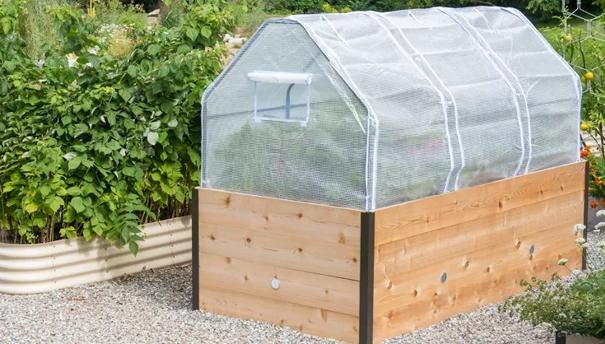 Next time you order a latte at your favorite coffee shop, ask if they save the grounds from all the coffee they brew.
Next time you order a latte at your favorite coffee shop, ask if they save the grounds from all the coffee they brew.When I go to my local coffee shop, I often come out with more than a cup of coffee. Near the door, they have a bin with free bags of used coffee grounds. Like most avid gardeners, I find it impossible to resist free food for my garden!
In the spring, I spread handfuls of coffee grounds around my acid-loving plants—azaleas, blueberries, rhododendrons. The grounds are slightly acidic and besides helping to lower the soil pH, they foster the humus-rich soil texture these plants really love.
In late summer and fall, I dig coffee grounds right into the vegetable garden after removing early-season crops such as peas and spinach. In the winter, I add the grounds to my compost pile. They’re a good source of nitrogen at a time of year when that can be a little difficult to come by.
Reasons to Compost Coffee Grounds
- Rich Source of Nitrogen: Coffee grounds are a great source of nitrogen, an essential nutrient for plant growth. When composted, they help balance the carbon-to-nitrogen ratio in your compost pile, accelerating decomposition and enriching the soil with valuable organic matter.
- Improves Soil Structure: Adding composted coffee grounds to your garden soil can improve its texture. They enhance drainage in heavy soils and increase water retention in sandy soils, promoting healthier root growth and better plant development.
- Boosts Plant Nutrients: Composted coffee grounds contain essential minerals like potassium, phosphorus, and magnesium. These nutrients promote robust plant growth, particularly in vegetables like tomatoes, carrots, and leafy greens.
- Reduces Waste and Promotes Sustainability: By composting coffee grounds, you can reduce waste while creating nutrient-rich compost for your garden. This eco-friendly practice helps divert waste from landfills and provides a sustainable way to fertilize your plants naturally.
Pest Deterrent Properties of Coffee Grounds
Composted coffee grounds can be an effective, natural way to deter pests in the garden. The grounds' slightly acidic nature and strong odor can help keep common garden pests like slugs, snails, and ants at bay. When sprinkled around plants or incorporated into the soil, composted coffee grounds create a barrier that many pests find unappealing. The gritty texture also makes it difficult for soft-bodied pests, like slugs and snails, to move across, causing them to avoid treated areas. Additionally, coffee grounds contain compounds that may repel certain insects, such as mosquitoes and fruit flies. By adding composted coffee grounds to your garden, you not only enrich the soil but also naturally reduce the presence of unwanted pests, creating a healthier environment for your plants.
Related Reading
1. Composting and Coffee Grounds – Cornell University’s Soil Health Blog discusses how to incorporate spent coffee grounds into compost, highlighting benefits like nutrient enrichment for plants. https://blogs.cornell.edu/soilnow/coffee/composting-and-coffee-grounds/
2. Used Appropriately, Coffee Grounds Improve Soil and Kill Slugs – Oregon State University Extension explains how to use coffee grounds in gardening, including their effects on soil and plant growth. https://extension.oregonstate.edu/news/used-appropriately-coffee-grounds-improve-soil-kill-slugs
Browns & Greens
Efficient composting depends upon a well-balanced mix of ingredients, which generally fall into two categories: browns (high carbon), and greens (high nitrogen). The list below gives examples of both types of ingredients. The ideal ratio is 25:1 (brown to green) but most people find three parts brown and one part green works quite well. Remember to layer your ingredients, keep the pile moist (like a well-wrung sponge) and turn it occasionally to incorporate a fresh supply of oxygen for the microbes.
Compost Ingredients
Browns (3 parts)
- corncobs and cornstalks
- paper
- pine needles
- dry leaves
- sawdust
- wood shavings
- straw
- woody vegetable stalks
Greens (1 part)
- coir
- coffee grounds
- eggshells
- fruit trimmings
- vegetable peels
- fresh leaves
- grass clippings
- feathers
- hair
- seaweed
- fresh weeds
- rotted manure
- alfalfa meal




